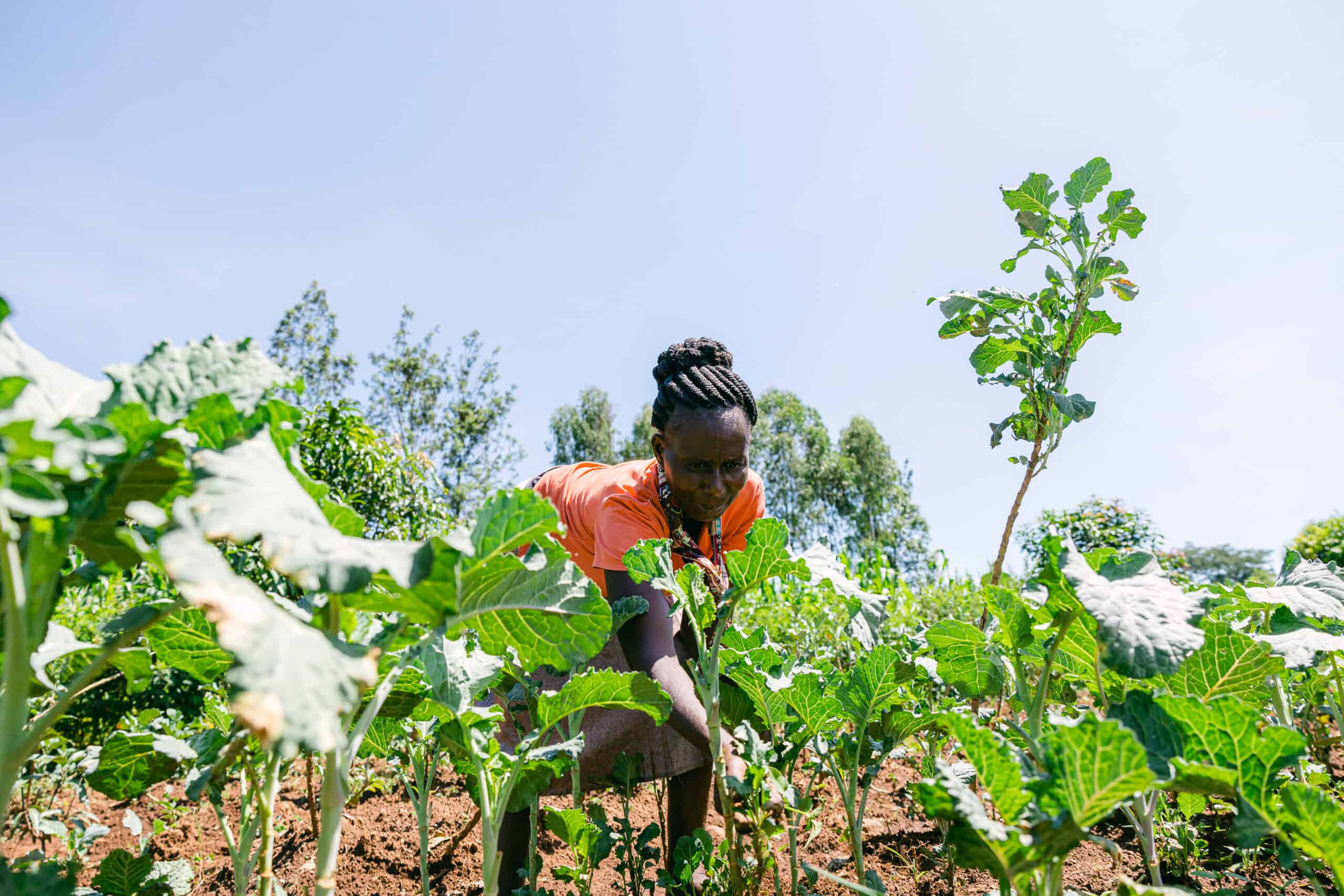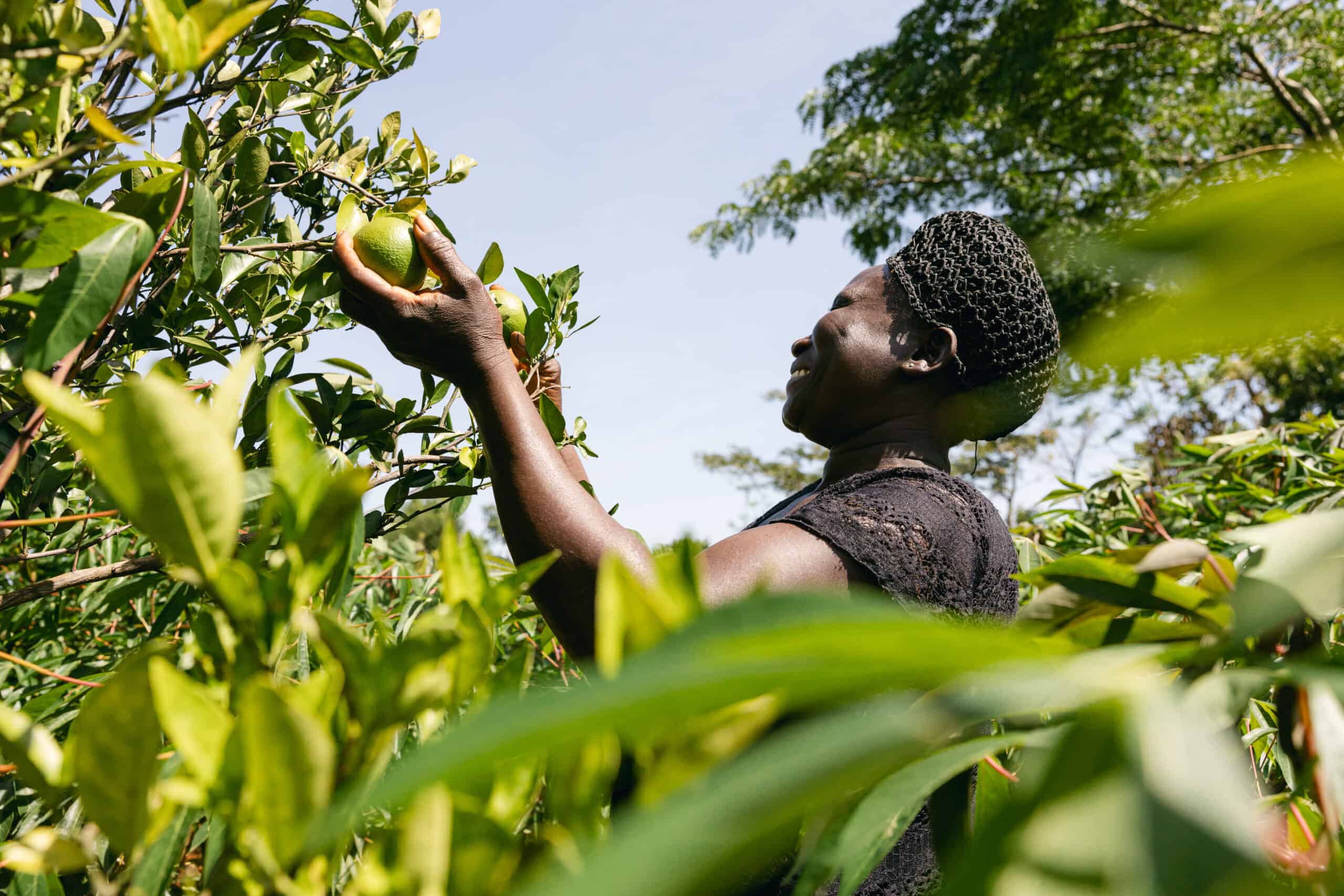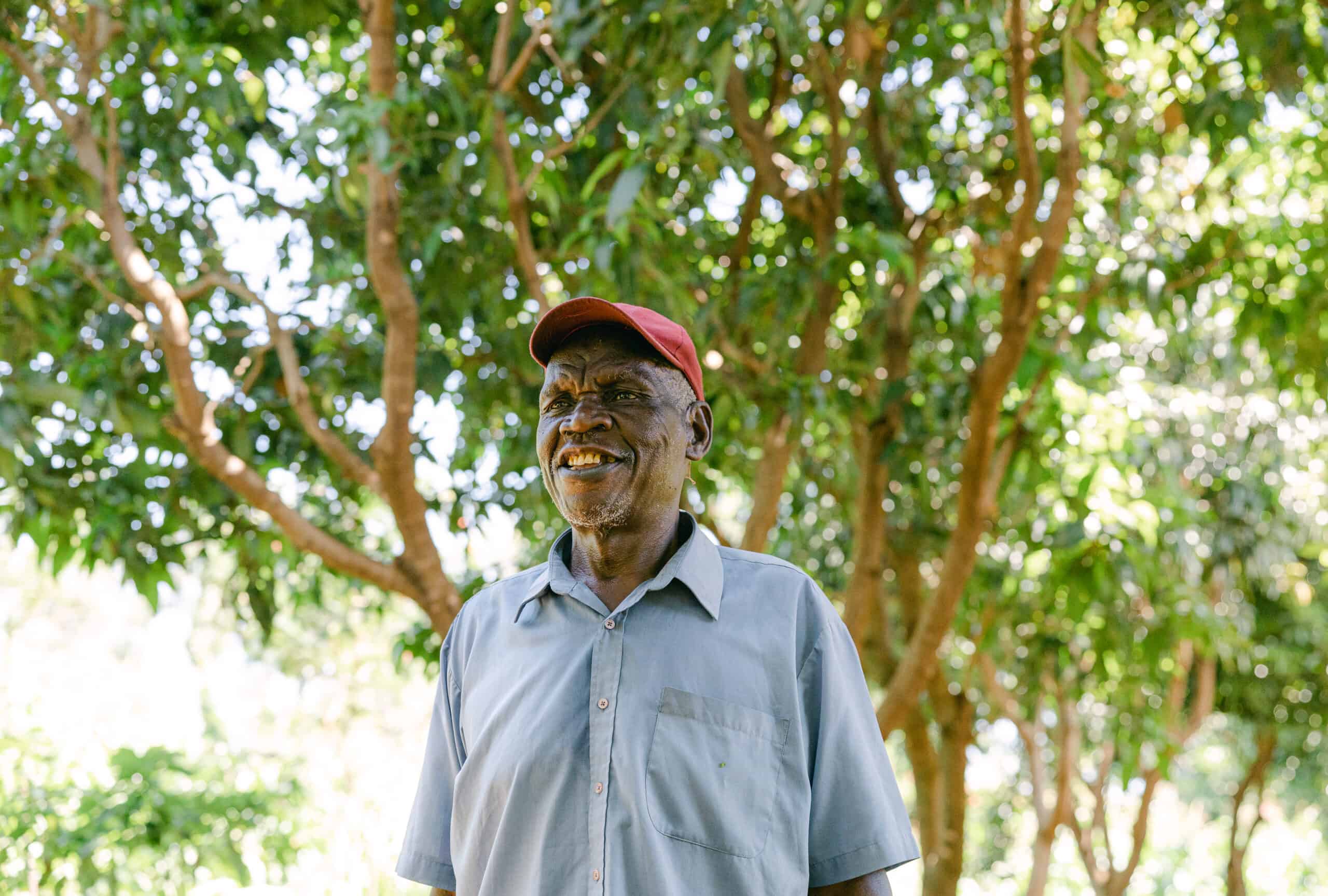Beneath the shade of the trees she planted herself, Rosemary Adika lists all the things growing on her Kenyan farm.
“Many different types of tree species; palm trees, avocado, mango. I grow maize, cassava.”
The list is far from exhaustive. At last count, she had 17 different food and market crops growing on her land and more than 6,600 trees.

The Forest Garden Approach
The lush, abundant farm is called a Forest Garden. And it is the result of careful planning by Rosemary and the Trees for the Future (TREES) training staff who first started working with her in 2020. Local TREES staff train farmers across sub-Saharan Africa, teaching them how to restore their degraded land and protect it so they can thrive on it for generations to come.
“We give farmers the tools, resources, and knowledge they need to transform their farms, but they really set the course for where they want to go, they design the roadmap,” says Technical Director Gabe Buttram.
Sarah is Hard at Work Bringing Her Plans to Life
In neighboring Uganda, Taaka Sarah is three years into the four-year program.
Sarah made a plan with training staff, thinking through what she’d like on the table for her family’s meals and what would sell well at market. She identified environmental and landscape challenges and TREES staff supported her with recommendations and insight into regenerative agriculture solutions.

“Farmers participate in 16 training modules as they advance through our program. They learn how to establish their own tree nurseries, harvest and store seeds, implement appropriate agroforestry techniques, manage pests without harmful chemicals, improve their soil with compost, and incorporate climate smart solutions,” Buttram says.
Soon, what started as a degraded corner of her farm is now an unrecognizable, thriving Forest Garden. She has increased the number of marketable products she grows from one to 29. With a steady income, Sarah can provide for her nine children, meet the needs of her household, and put some money in savings.
Raphael Gets Everything He Needs from His Garden
In Kenya, Raphael Owaka’s Forest Garden is providing for his big family too.
“If the child lacks food, they come into this forest of food, they eat. If there is no money, they go to the farm, they harvest some vegetables, they get money. If we don’t have milk, we go to the cow, we get milk.”

Looking around his thriving Forest Garden, Raphael recalls how the typical approach to farming wasn’t serving his family anymore. Farmers are encouraged to clear the land of plant life and plant a lot of just one or two crops.
“After we had cleared these trees, it became hotter,” he says. But the Forest Garden supports the land and natural processes. “Trees which are planted are making the whole atmosphere cooler and cooler. So now, climate change, we are mitigating it. We are on the road to success.”
One the Road to Success
“That’s what makes these projects so successful, they incorporate the needs of the farmer and the needs of the land,” Buttram says. “Farmers make a plan for their land that is sustainable. Together, we’re making a lasting plan for our planet.”
Help more farmers make a plan for the planet with a donation to Trees for the Future.